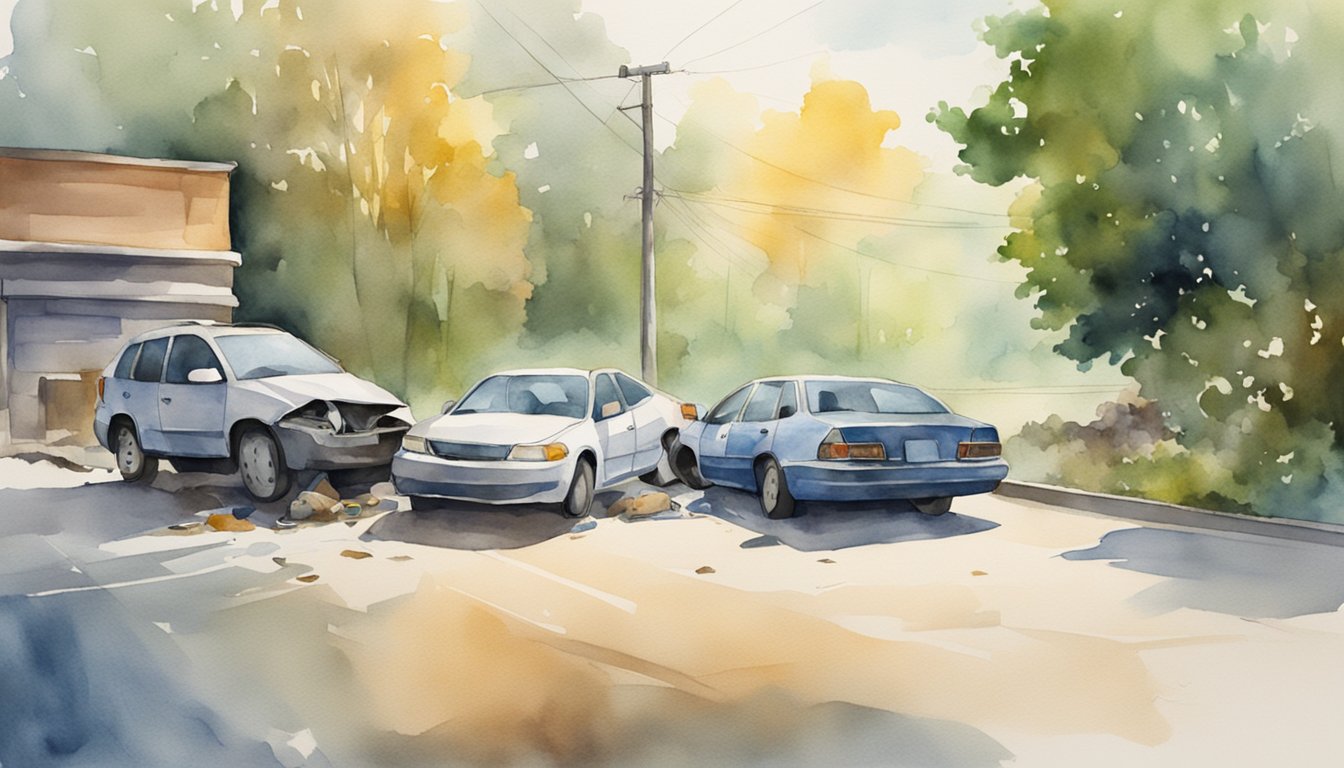Understanding Underinsured Motorist Coverage
Underinsured motorist coverage (UIM) helps when the at-fault driver doesn’t have enough insurance to cover your damages.
This coverage is essential in situations where the other driver’s liability insurance falls short of your costs after an accident.
UIM coverage kicks in after the at-fault driver’s policy limit is exhausted.
This can cover bodily injury and property damage that exceeds the other driver’s liability insurance.
Key Points About UIM Coverage:
- Bodily Injury: Covers medical expenses, pain and suffering.
- Property Damage: Covers repair costs for your vehicle and personal property.
Your UIM coverage limits will be listed in your car insurance policy.
These limits usually appear as two numbers, such as 50/100, meaning $50,000 per person and $100,000 per accident are covered.
Comparison with Uninsured Motorist (UM) Coverage:
- UM Coverage: Covers you if the at-fault driver has no insurance at all.
- UIM Coverage: Covers you if the at-fault driver has insufficient insurance.
Both uninsured motorist coverage and UIM coverage are critical components of your auto insurance policy, providing a safety net.
Making sure you have sufficient UIM coverage can offer you peace of mind.
It is a crucial part of your broader insurance coverage, protecting you from the financial burden of an accident.
Review your policy limit regularly to ensure it meets your needs.
This helps protect your finances if you face an accident where the other driver’s insurance isn’t enough.
Implementing Underinsured Motorist Coverage in Practice

When you have underinsured motorist coverage, it can make a big difference after a car accident.
Here’s how you can implement it effectively:
1.
Understand Your Policy Limits
Your car insurance policy will have specific limits for underinsured motorist (UIM) coverage.
Check these limits to know how much coverage you have available for bodily injury and property damage.
2.
Filing a Claim
If you’re involved in an accident with an underinsured driver, you need to file a claim with your insurance company.
Make sure you provide all necessary details about the accident, the at-fault driver, and any damages incurred, including medical expenses and lost wages.
3.
Documentation is Key
Keeping good records will help streamline your claim process.
This includes police reports, medical bills, repair estimates for any property damage, and any evidence of lost wages.
The more documentation you have, the easier it will be to substantiate your claim for damages.
4.
Dealing with Insurance Adjusters
You may have to work with an insurance adjuster to determine the total amount of damages.
Knowing terms like adjuster can help in understanding their role.
Always keep your communication detailed and professional.
5.
Deductibles and Stacking
Know whether your policy has a deductible for UIM claims.
Some policies also allow “stacking,” which lets you combine coverage limits from multiple vehicles under the same policy.
6.
Additional Coverages
Consider having other helpful coverages, like medical payments or personal injury protection, to further safeguard against significant out-of-pocket expenses.
7.
Legal Assistance
Sometimes, having a claimant or an attorney can be beneficial, especially if disputes arise with the insurance company about the compensation amount for bodily injury or other damages.
Using these practical steps can ensure that your underinsured motorist coverage works efficiently to protect you in case of an accident.
Associated Terms
Uninsured Motorist (UM) and Underinsured Motorist (UIM) coverage are important parts of car insurance policies.
They protect you if the driver at fault has no insurance or insufficient coverage.
Uninsured Motorist Bodily Injury (UMBI) pays for medical bills, pain and suffering, and funeral expenses if an uninsured driver injures you.
This coverage is essential for protection against uninsured drivers.
Underinsured Motorist Property Damage (UMPD) takes care of property damage when the at-fault driver’s insurance is not enough.
This can include repairs to your car.
Collision Coverage helps cover costs to repair your car if you’re in an accident, regardless of fault.
Learn more about collision coverage.
Liability Car Insurance is required in most states.
It covers damages to others if you cause an accident.
However, it doesn’t cover your own injuries or car repairs.
Bodily Injury (BI) coverage in car insurance pays for injuries that you may cause to others in an accident.
It includes medical bills and pain and suffering.
Medical Bills from an accident can be high. Health Insurance and UMBI can help with these costs.
Hit-and-Run Accidents are incidents where the at-fault driver flees the scene.
UM coverage can help pay for your damages if you are involved in such an accident.
Uninsured/Underinsured Motorist Coverage is vital in protecting you from uninsured or underinsured drivers.
It can cover both bodily injury and property damage.
Stacking refers to the ability to combine coverage limits from multiple policies or vehicles for greater protection.
Car insurance quotes can help you compare and choose the best coverage options that suit your needs.
Understanding these terms can help you make informed decisions about your car insurance policy.
Frequently Asked Questions

Underinsured motorist coverage can be complex, but it provides essential protection when an at-fault driver doesn’t have enough insurance.
Below are answers to common questions to help you understand this coverage better.
What are the limits of recovery from an underinsured motorist claim?
The limits of recovery depend on the specific terms of your policy.
Generally, you’ll only receive the additional amount your underinsured motorist (UIM) coverage exceeds the at-fault driver’s liability insurance.
For instance, if the at-fault driver has $25,000 in coverage and your UIM limit is $75,000, you could be eligible to receive up to an additional $50,000.
In what scenarios is underinsured motorist coverage beneficial?
Underinsured motorist coverage is especially useful when the at-fault driver has minimum required insurance, which often doesn’t cover all expenses.
For example, in states with low minimum liability limits for bodily injury, medical bills can far exceed these limits.
This coverage helps fill that gap, ensuring you’re not left with substantial out-of-pocket costs.
How does underinsured motorist coverage complement collision and comprehensive insurance?
Underinsured motorist coverage specifically covers costs related to injuries and damages caused by another driver who doesn’t have enough insurance.
By contrast, collision insurance covers damages to your vehicle regardless of fault, and comprehensive insurance covers non-collision incidents like theft or natural disasters.
Together, these types of coverage provide comprehensive protection.
Can you provide an example of a claim involving underinsured motorist coverage?
Imagine you’re in an accident caused by another driver who has a $30,000 liability limit, but your medical expenses total $50,000.
Your underinsured motorist coverage kicks in to cover the additional $20,000, ensuring you’re not burdened with this hefty expense.
This makes a significant difference in your financial stability after an accident.
What are the potential drawbacks of opting out of underinsured motorist coverage?
Opting out of underinsured motorist coverage can leave you vulnerable to substantial expenses if you’re hit by a driver without sufficient insurance.
You may have to pay out-of-pocket for medical bills, lost wages, and other costs that exceed the at-fault driver’s coverage limits.
This could place you under significant financial strain.
How is underinsured motorist coverage applied in at-fault states?
In at-fault states, the insurance of the driver who caused the accident is responsible for covering the damages.
If their coverage isn’t adequate, your underinsured motorist coverage will cover the difference, up to the limits of your policy.
This ensures that you’re compensated fairly, even if the at-fault driver is underinsured.






